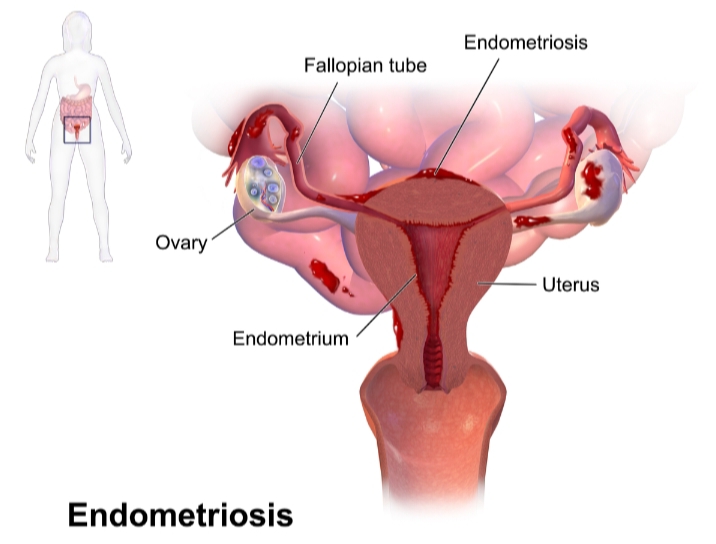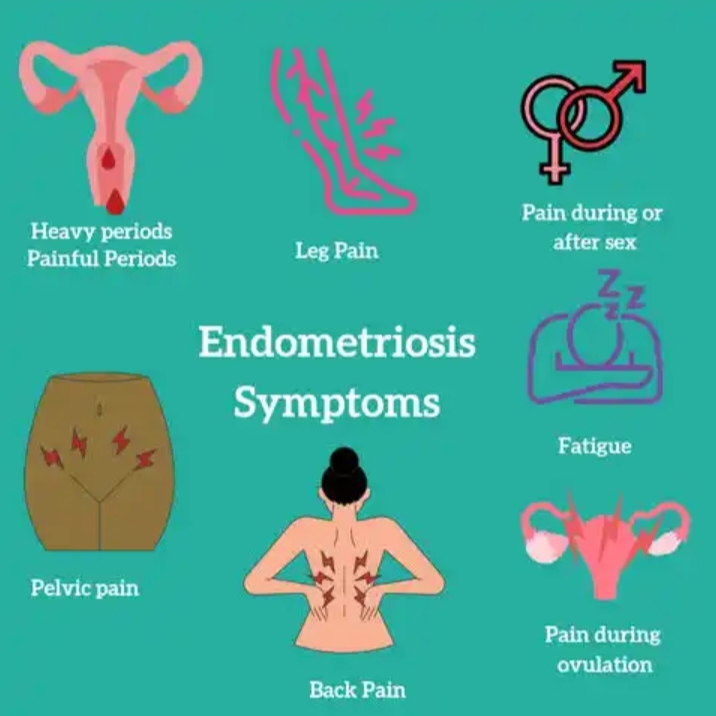What is Endometriosis?
Endometriosis is a chronic medical condition where tissue similar to the lining of the uterus (endometrium) grows outside the uterus. This abnormal growth most commonly occurs in the ovaries, fallopian tubes, outer surfaces of the uterus, and other pelvic organs, but it can also occur in distant organs in rare cases.
These growths respond to hormonal changes during the menstrual cycle, causing inflammation, pain, and the formation of scar tissue.
Endometriosis Pain
Pain is one of the hallmark symptoms of endometriosis and can range from mild to severe. The pain is typically associated with the menstrual cycle but may occur at other times as well.
Common Types of Pain:
- Dysmenorrhea: Painful menstrual cramps that may be debilitating.
- Chronic Pelvic Pain: Persistent pain in the pelvic region, not necessarily tied to menstruation.
- Dyspareunia: Pain during or after sexual intercourse.
- Pain with Bowel Movements or Urination: Often worsens during periods.
- Back and Leg Pain: Especially if endometrial tissue affects the nerves.
Endometriosis and the Menstrual Period
Endometriosis often causes:
- Heavy or irregular periods (menorrhagia).
- Severe cramps before and during menstruation.
- Spotting or bleeding between periods.
- A shortened menstrual cycle (e.g., cycles less than 27 days).
The symptoms can worsen over time and significantly impact quality of life.
Causes of Endometriosis
The exact cause of endometriosis is unknown, but several theories exist:
- Retrograde Menstruation: Menstrual blood flows backward into the pelvic cavity instead of exiting the body, allowing endometrial cells to implant and grow.
- Embryonic Cell Transformation: Hormones convert embryonic cells into endometrial-like cells outside the uterus.
- Surgical Scars: Endometrial cells can attach to surgical incisions after procedures like C-sections.
- Immune System Disorders: The immune system may fail to recognize and destroy endometrial-like tissue growing outside the uterus.
- Genetics: A family history of endometriosis increases risk.
Symptoms of Endometriosis
Symptoms vary but may include:
- Severe menstrual cramps
- Chronic pelvic pain
- Pain during sex
- Painful urination or bowel movements, especially during menstruation
- Heavy menstrual bleeding or bleeding between periods
- Infertility or difficulty getting pregnant
- Fatigue, diarrhea, constipation, bloating, and nausea, especially during menstruation
Some women may have no symptoms at all and only discover the condition when trying to conceive.
Endometriosis Treatment
There is no known cure for endometriosis, but several treatments can manage symptoms and improve quality of life:
1. Medications
- Pain Relief: NSAIDs (e.g., ibuprofen) help reduce pain and inflammation.
- Hormonal Therapy:
- Birth control pills
- GnRH (gonadotropin-releasing hormone) agonists and antagonists
- Progestin therapy
- Danazol (suppresses ovulation and menstruation)
2. Surgical Options
- Laparoscopy: Minimally invasive surgery to diagnose and remove or destroy endometrial growths.
- Laparotomy: More extensive surgery in severe cases.
- Hysterectomy: Removal of the uterus and possibly ovaries; typically considered a last resort.
3. Fertility Treatment
For women facing infertility:
- Assisted reproductive technologies like IVF (in vitro fertilization) may be considered.
4. Lifestyle and Alternative Therapies
- Dietary changes, regular exercise, and stress management may help.
- Acupuncture, physical therapy, and pelvic floor therapy may offer relief for some.
Complete Guide to Sexual Health: Education, STDs, and Clinic Services
In conclusion Endometriosis is a complex, often painful condition that requires individualized treatment. Early diagnosis and a multi-faceted approach to management, often involving both medical and lifestyle strategies, can significantly improve outcomes and quality of life. If you suspect endometriosis, consult a healthcare provider for proper diagnosis and treatment planning.





